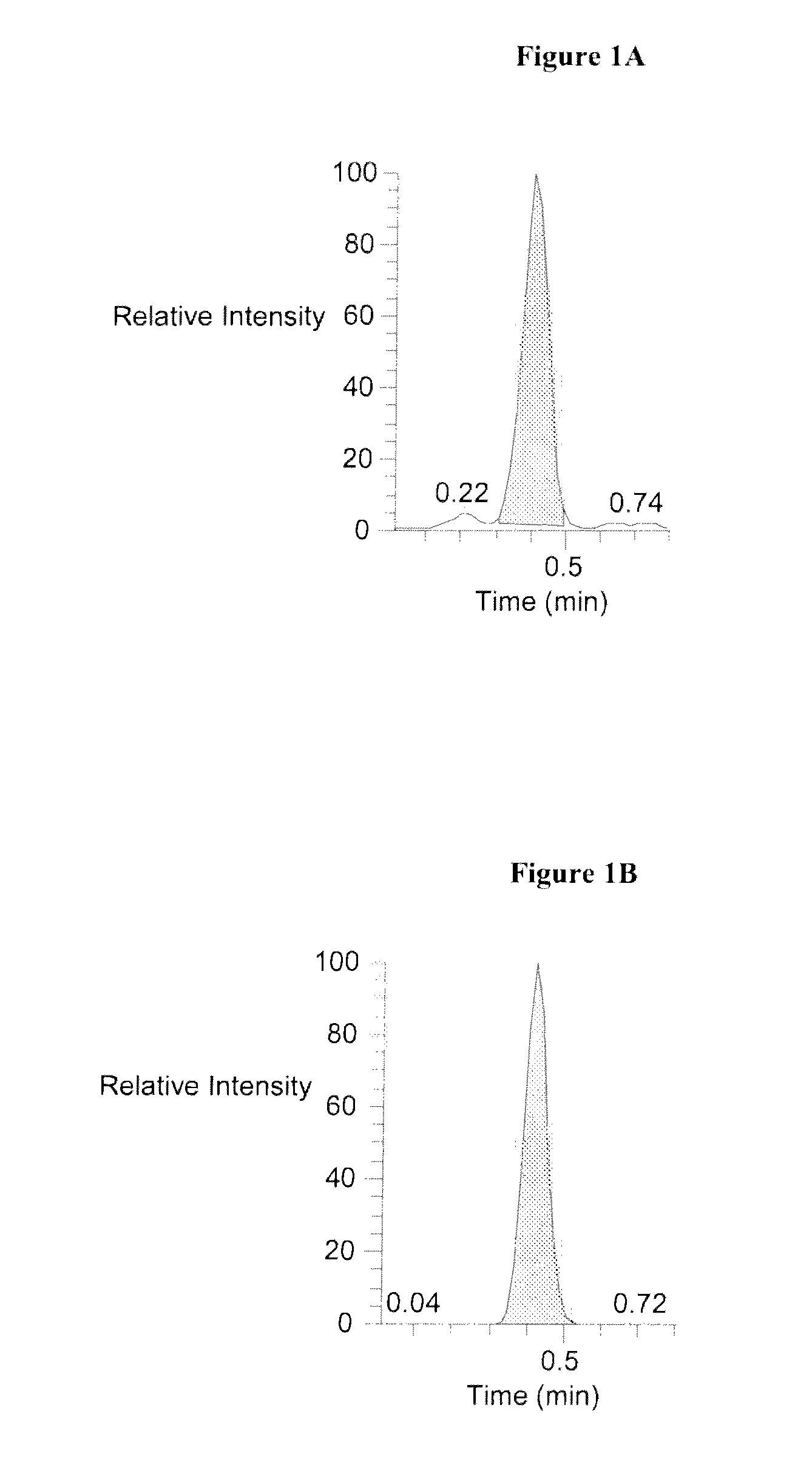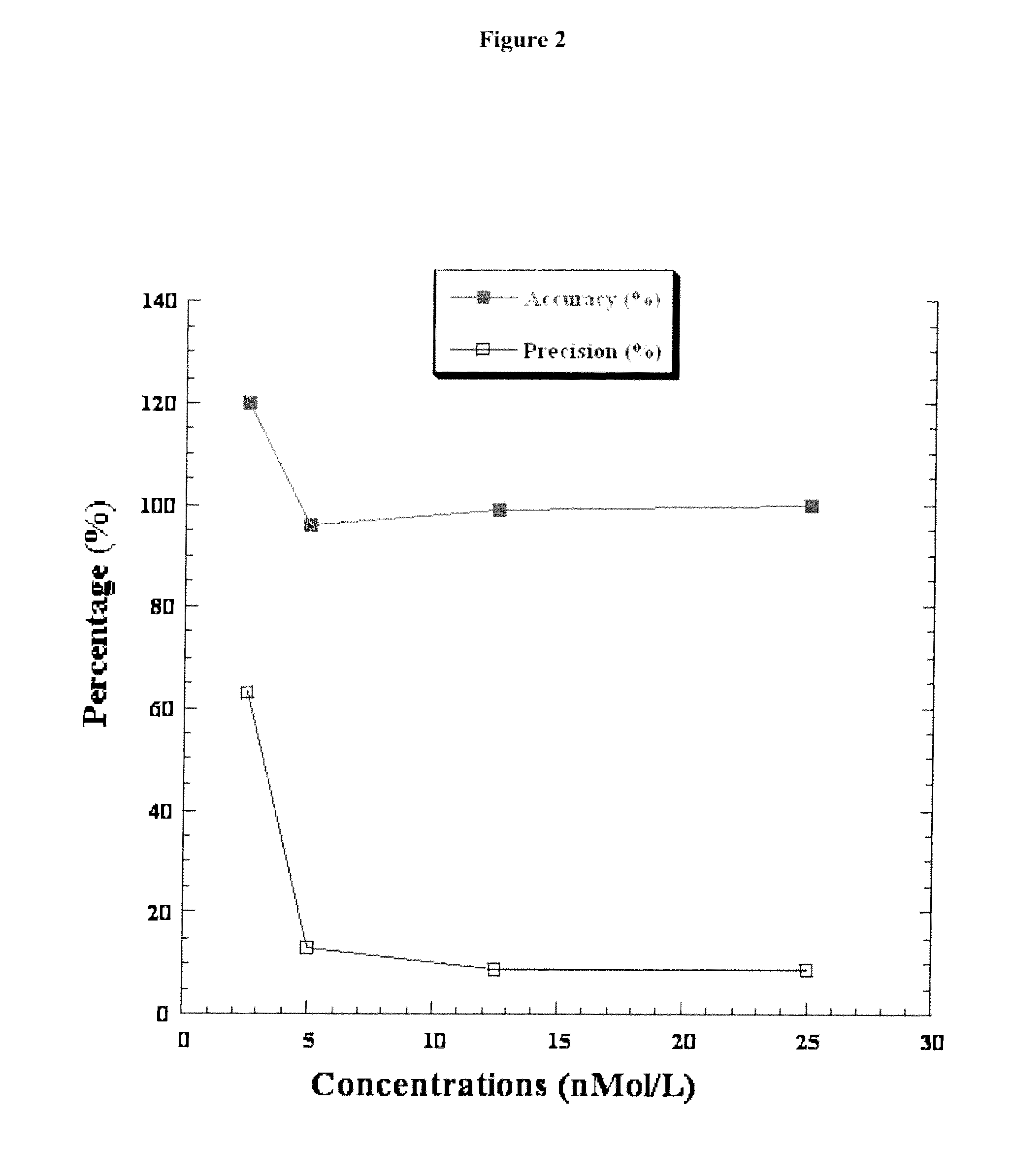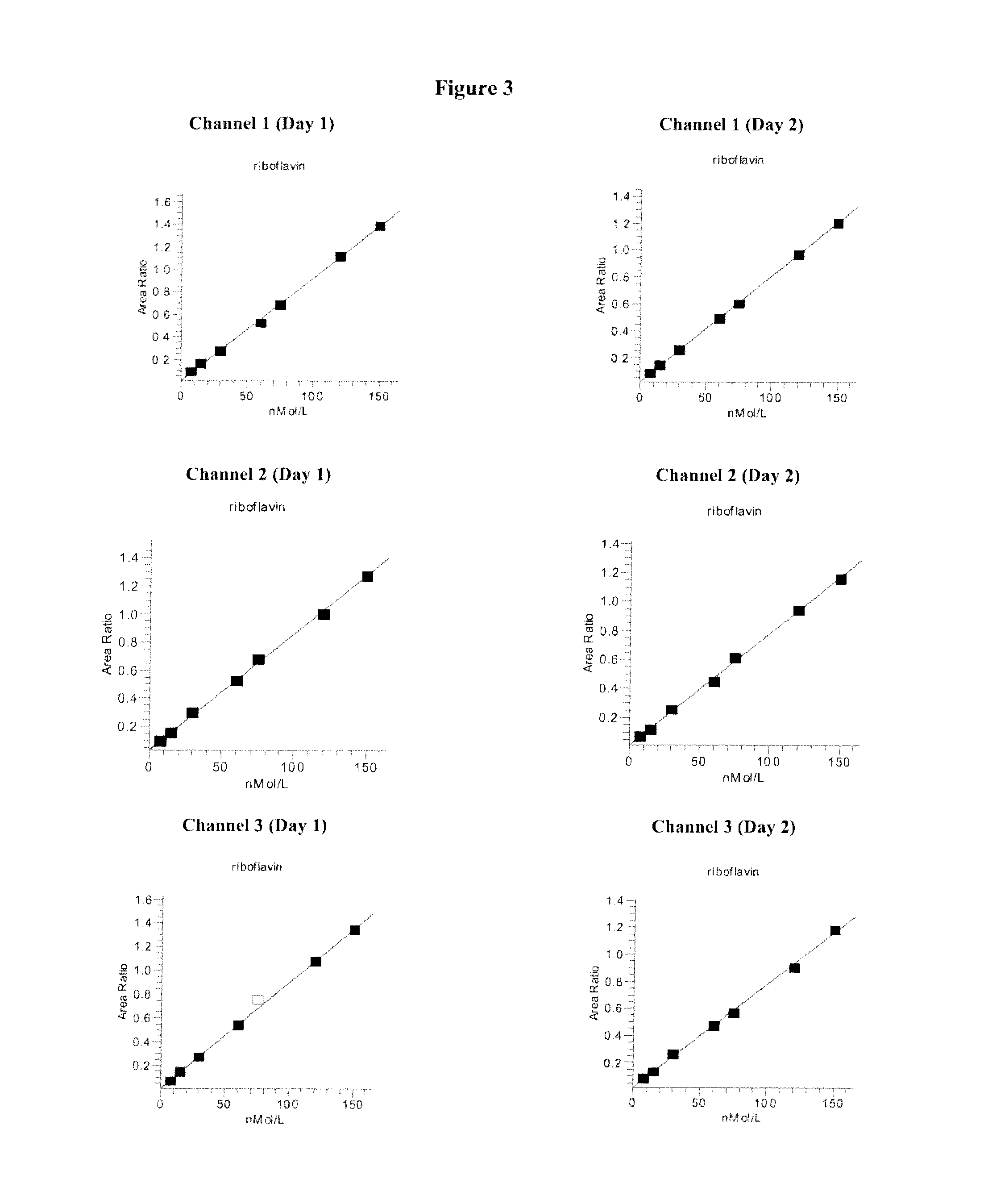Vitamin b2 detection by mass spectrometry
a mass spectrometry and vitamin b2 technology, applied in the field of quantitative measurement of vitamin b2, can solve the problems of vitamin b2 excretion, riboflavin deficiency, relatively common deficiency, etc., and achieve the effects of improving solvent removal, reducing dissociation, and saving significant time and expens
- Summary
- Abstract
- Description
- Claims
- Application Information
AI Technical Summary
Benefits of technology
Problems solved by technology
Method used
Image
Examples
example 1
Reagent and Sample Preparation
[0081]Two internal standard solutions were prepared with 13C, 15N2-vitamin B2 (Moravek Biomedicals, Inc., custom made, or equivalent). A 13C, 15N2-vitamin B2 internal standard stock solution of 300 μmol / L 13C, 15N2-vitamin B2 in water was prepared. A 500 μL portion of this solution was then diluted to 1 L with water to prepare a 13C, 15N2-vitamin B2 internal standard working solution of 150 nmol / L.
[0082]Three calibrant solutions were prepared with vitamin B2 (U.S. Pharmacopia, Cat. No. 1603006, or equivalent). First, a vitamin B2 calibrant stock solution of about 300 μmol / L vitamin B2 in water was prepared. 10 mL of this solution was then diluted with about 90 mL water to prepare a vitamin B2 intermediate calibrant solution of about 30 μmol / L. 2.5 mL of the intermediate calibrant solution was then added to 497.5 mL of blank human serum (Biocell Laboratories, Inc., Cat. No. 1131-00, or equivalent) to prepare a vitamin B2 calibrant working solution of 150...
example 2
Extraction of Vitamin B2 from Samples using Liquid Chromatography
[0087]Sample injection was performed with a Cohesive Technologies Aria TLX-4 TFLC system using Aria OS V 1.5.1 or newer software. This system allows for simultaneous chromatography of up to four samples. In the Examples described below, up to three channels were used for simultaneous chromatography of three samples.
[0088]For each channel, the TFLC system automatically injected 60 μL of the above prepared samples into a Cyclone MCX column (60 μm particle size, 1.0×50 mm, from Cohesive Technologies, Inc.) packed with large particles. The samples were loaded at a high flow rate (2.0 mL / min, loading reagent 100% water) to create turbulence inside the extraction column. This turbulence ensured optimized binding of vitamin B2 to the large particles in the column and the passage of residual protein and debris to waste.
[0089]Following loading, the sample was eluted off to the analytical column (polar embedded C-18 Atlantis T3 ...
example 3
Detection and Quantitation of Vitamin B2 by MS / MS
[0091]MS / MS was performed using a Finnigan TSQ Quantum Ultra MS / MS system (Thermo Electron Corporation) The following software programs, all from Thermo Electron, were used in the Examples described herein: Quantum Tune Master V 1.2 or newer, Xcalibur V 1.4 SR1 or newer, TSQ Quantum 1.4 or newer, and LCQuan V 2.0 with SP1 or newer. Liquid solvent / analyte exiting the analytical column flowed to the heated nebulizer interface of the MS / MS analyzer. The solvent / analyte mixture was converted to vapor in the heated tubing of the interface. Analytes in the nebulized solvent were ionized by ESI.
[0092]Ions passed to the first quadrupole (Q1), which selected ions with a mass to charge ratio of 377.2±0.50 m / z. Tons entering quadrupole 2 (Q2) collided with argon gas to generate ion fragments, which were passed to quadrupole 3 (Q3) for further selection. Simultaneously, the same process using isotope dilution mass spectrometry was carried out wit...
PUM
 Login to View More
Login to View More Abstract
Description
Claims
Application Information
 Login to View More
Login to View More - R&D
- Intellectual Property
- Life Sciences
- Materials
- Tech Scout
- Unparalleled Data Quality
- Higher Quality Content
- 60% Fewer Hallucinations
Browse by: Latest US Patents, China's latest patents, Technical Efficacy Thesaurus, Application Domain, Technology Topic, Popular Technical Reports.
© 2025 PatSnap. All rights reserved.Legal|Privacy policy|Modern Slavery Act Transparency Statement|Sitemap|About US| Contact US: help@patsnap.com



